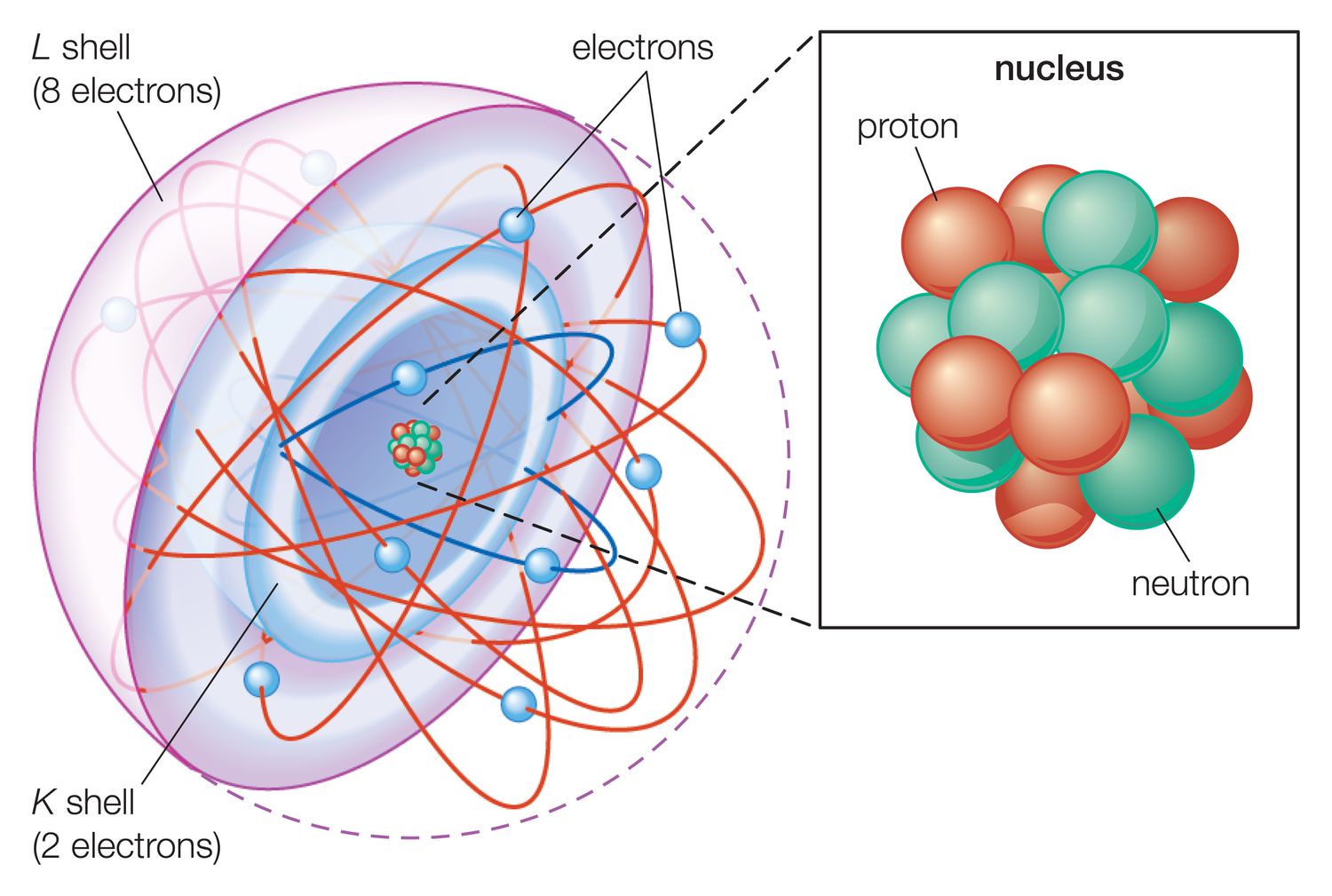Electron configuration refers to the arrangement of electrons in an atom, molecule, or ion. It describes the distribution of electrons among the energy levels and orbitals in an atom and helps to explain the chemical and physical properties of elements. In this article, we will explore the concept of electron configuration, how it is determined, and its significance in chemistry.
The Basics of Electron Configuration
Atoms are composed of protons, neutrons, and electrons. Protons and neutrons are found in the nucleus of an atom, while electrons orbit around the nucleus in energy levels or shells. Each energy level has a certain capacity for electrons, and the electrons fill these levels in a specific order.
The first energy level can hold up to 2 electrons, while the second energy level can hold up to 8 electrons. The third energy level can hold up to 18 electrons, and the fourth energy level can hold up to 32 electrons. These levels are further divided into sublevels, which are named s, p, d, and f, and each sublevel has a certain number of orbitals that can hold electrons.
The Aufbau Principle
The Aufbau principle is a basic rule that describes the order in which electrons fill the energy levels and sublevels of an atom. It states that electrons will occupy the lowest energy level available to them before moving to higher energy levels. In other words, electrons fill up the shells and subshells in a specific order, starting from the lowest energy state.
The order of filling of the subshells is as follows: 1s, 2s, 2p, 3s, 3p, 4s, 3d, 4p, 5s, 4d, 5p, 6s, 4f, 5d, 6p, 7s, 5f, 6d, and 7p. Electrons fill the s subshells before filling the p subshells, which in turn are filled before the d and f subshells.

Electron Configurations of Elements
The electron configuration of an element refers to the arrangement of electrons in its atoms. It can be written using a shorthand notation that indicates the energy level, sublevel, and number of electrons in each sublevel. For example, the electron configuration of carbon (atomic number 6) can be written as 1s2 2s2 2p2. This indicates that there are two electrons in the first energy level (1s), two electrons in the second energy level (2s), and two electrons in the second energy level's p sublevel (2p).
The electron configuration of an element is determined by the number of electrons it has, which is equal to its atomic number. The first 18 elements have simple electron configurations, while the electron configurations of heavier elements become more complex due to the additional sublevels and orbitals.
Significance of Electron Configuration
The electron configuration of an element is important in determining its chemical and physical properties. It determines the number and arrangement of electrons in the atom, which affects how the atom interacts with other atoms and molecules.
For example, elements with similar electron configurations tend to have similar chemical properties. This is because they have the same number of valence electrons, which are the outermost electrons involved in chemical bonding. The valence electrons determine the type of chemical bonds that an element can form and its reactivity.
Electron configuration also affects the magnetic and electrical properties of elements. Elements with completely filled subshells, such as helium and neon, are non-reactive and have low electrical conductivity. On the other hand, elements with partially filled subshells, such as copper and silver, are more reactive and have high electrical conductivity.
Exceptions to the electron configuration rules
While the Aufbau principle is generally followed, there are a few exceptions to this rule. One of the most notable is the chromium (Cr) atom, which has an electron configuration of [Ar] 3d5 4s1 instead of the expected [Ar] 3d4 4s2. Another example is the copper (Cu) atom, which has an electron configuration of [Ar] 3d10 4s1 instead of the expected [Ar] 3d9 4s2.
These exceptions occur because half-filled or completely filled subshells are more stable than partially-filled subshells. In the case of chromium, having five half-filled d orbitals is more stable than having four partially filled and one completely filled d orbitals. Similarly, in the case of copper, having a completely filled d subshell is more stable than having a partially filled d subshell.
Electron configuration notation
Electron configurations can be written in a shorthand notation using the noble gas configuration. This notation involves writing the symbol of the noble gas in brackets to represent the filled subshells of that gas, followed by the electron configuration of the remaining subshells.
For example, the electron configuration of sodium (Na) can be written as [Ne] 3s1, where [Ne] represents the electron configuration of neon (Ne), which has a completely filled 1s and 2s subshell. The remaining electron of sodium is found in the 3s subshell.
Conclusion
Electron configuration is a fundamental concept in chemistry that helps us understand the behavior and properties of atoms. The electron configuration of an atom determines its reactivity, bonding behavior, and physical properties. The Aufbau principle, Hund's rule, and the Pauli exclusion principle provide a framework for understanding how electrons occupy the orbitals of an atom. By understanding electron configurations, scientists can predict the chemical and physical properties of different elements and develop new materials and technologies.
Overall, the electron configuration is a fascinating and important area of study that plays a critical role in our understanding of the natural world around us.

Frequently Asked Questions (FAQs) About Electron Configuration:
What is electron configuration?
Electron configuration refers to the arrangement of electrons in the orbitals of an atom. It determines the reactivity, bonding behavior, and physical properties of an atom.
What are the Aufbau principle, Hund's rule, and the Pauli exclusion principle?
The Aufbau principle states that electrons fill orbitals in order of increasing energy level. Hund's rule states that electrons fill orbitals with the same energy level one at a time before pairing up. The Pauli exclusion principle states that no two electrons in an atom can have the same set of four quantum numbers.
How do exceptions to the electron configuration rules occur?
Exceptions to the electron configuration rules occur when half-filled or completely filled subshells are more stable than partially filled subshells. Examples of exceptions include chromium and copper atoms.
How is electron configuration notation written?
Electron configuration notation is written using the noble gas configuration, where the symbol of the noble gas in brackets represents the filled subshells of that gas, followed by the electron configuration of the remaining subshells.
Why is electron configuration important?
Electron configuration is important because it helps us understand the behavior and properties of atoms. By understanding electron configurations, scientists can predict the chemical and physical properties of different elements and develop new materials and technologies.





